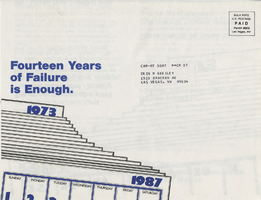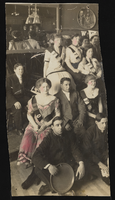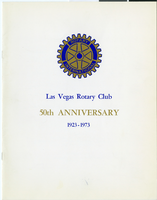Search the Special Collections and Archives Portal
Search Results

Ron Lurie campaign materials and resume, item 11
Description
Oversized pamphlet against Ron Lurie "Fourteen years of failure is enough"

Letter from W. H. Guild (Los Angeles) to Walter R. Bracken (Las Vegas), October 14, 1942
Date
Archival Collection
Description
Guild expressed confusion for the very high usage compared to the year before, and posited that the previous year's readings were false.
Text
Audio clip from interview with Freddie Glusman, October 29, 2015
Date
Archival Collection
Description
In this clip Freddie Glusman discusses the restaurant he owned and his charitable giving over the years.
Sound

Letter from Walter R. Bracken (Las Vegas) to F. R. McNamee (Los Angeles), August 14, 1913
Date
Archival Collection
Description
Bracken wrote to the company lawyer to find a permanent solution to a yearly problem of gate vandalism at the Stewart burial plot.
Text

Grace Hayes with sisters Bess and Myrtle: photographic print
Date
Archival Collection
Description
Image

Dr. William S. "Doc" Park, Rotary Club President, 1929-1930, document 1 of 2
Date
Archival Collection
Description
Text
Scrapbooks, 1946 to 1996
Level of Description
Scope and Contents
The Scrapbooks contains newspaper articles, photographs, and other memorabilia to document their yearly activities year by year.
Archival Collection
Collection Name: Junior League of Las Vegas Records
Box/Folder: N/A
Archival Component

Las Vegas Rotary Club 50th Anniversary Program, 1973
Date
Archival Collection
Description
Text

Maude Frazier portrait: photographic print
Date
Archival Collection
Description
Image
